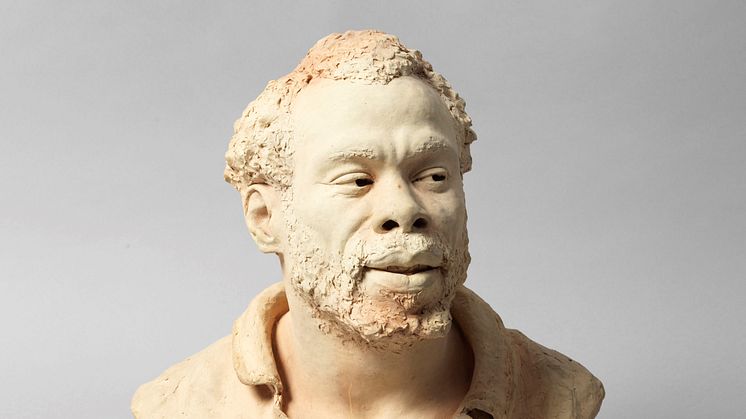
Press release -
New acquisition: Verner Åkerman’s sculpture of Pierre Louis Alexandre
Nationalmuseum has recently acquired a sculpture in terracotta by Verner Åkerman depicting Pierre Louis Alexandre. Pierre Louis Alexandre is primarily known as a model at the Academy of Fine Arts in the latter part of the 1800s and there are many surviving studies of him. However, the acquired sculpture is the only one of its kind known today.
Pierre Louis Alexandre (1844-1905) was born in French Guiana and came to Stockholm in 1863, probably as a stowaway on an American ship with a cargo of pork. Here he made his living as a dock labourer, but has primarily become known as a model at the Academy of Fine Arts. In the archive sources he appears with the Swedish surnames of Pettersson and Alexandersson. It was at the academy that the sculptor Verner Åkerman (1854 – 1903) met Pierre Louis Alexandre. He made his sculpture of the model in 1885. Åkerman was far from the only artist who did studies of him, but no other sculptures are known.
Åkermans terracotta is not a portrait in the strict sense but a so-called "character head", a genre that was cultivated in academy teaching. The intention was not primarily to make a portrait even though the presentation is highly individualising. Later that year, the sculpture was exhibited under the title "Zambo". The exoticising approach to a black model was practically the rule in the art of the time. For example, Pierre Louis Alexandre appears as a guard in the sultan's harem with a hooked sabre and turban in other academy students' representations. In Åkerman’s work, he wears a working shirt that reflects reality as a dock labourer, but still the model's identity was not interesting. In choosing a fictitious title, Pierre Louis Alexandre’s imagination was quickly sent off to a continent which he had probably never even visited. The period’s romantic and standardised representation of Africans appears to us to be both naive and prejudiced.
A few years after Åkerman exhibited his terracotta bust of Pierre Louis Alexandre, he enjoyed some successes and received a royal medal and the Academy's travel Scholarship, which made possible a decade's stay in Paris. Åkerman lived at a time that was still characterised by tradition and a large measure of naturalism. His depiction of Pierre Louis Alexandre is not only an excellent example of his overlooked artistry, but also a testimony to the peculiar fate of Pierre Louis Alexandre.
The sculpture is at present exhibited in the museum's collection in the rooms for the art of 1870-1910.
Nationalmuseum receives no state funding with which to acquire design, applied art and artworks, instead the collections are enriched through donations and gifts from private foundations and funds. The acquisition has been made possible by donations from Hedda and N. D. Qvists Memorial Trust.
Inventory number:
Verner Åkerman, Portrait of Pierre Louis Alexandre, 1885, NMSk 2383.
For more information
Magnus Olausson, head of collections, magnus.olausson@nationalmuseum.se + 46 (0)8 5195 4371
Hanna Tottmar, head of press, press@nationalmuseum.se, +46 (0)8 5195 4400
Categories
Nationalmuseum is Sweden’s museum of art and design. The collections comprise older paintings, sculpture, drawings and graphic art, and applied art and design up to the present day. The museum building has currently been renovated and reopened in autumn 2018. Nationalmuseum has partnerships with Svenska Dagbladet, Bank of America Merrill Lynch, The Wineagency and the Grand Hôtel Stockholm.

